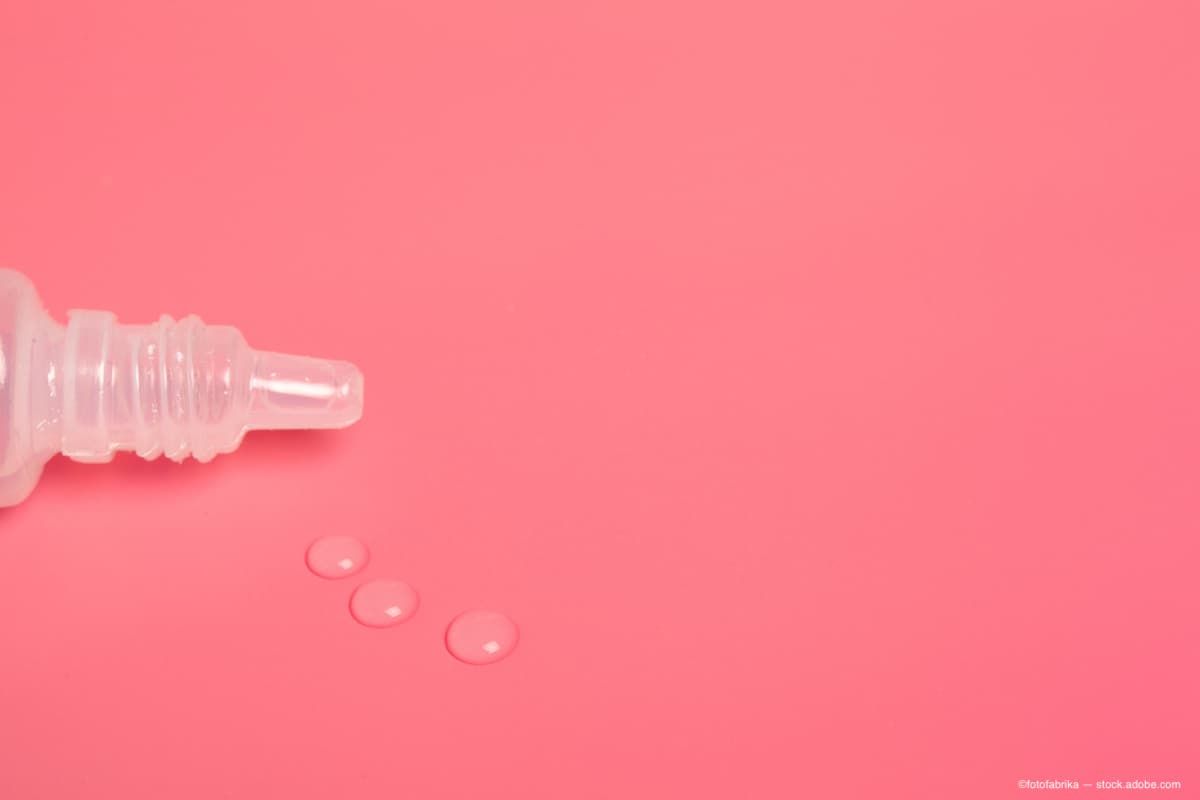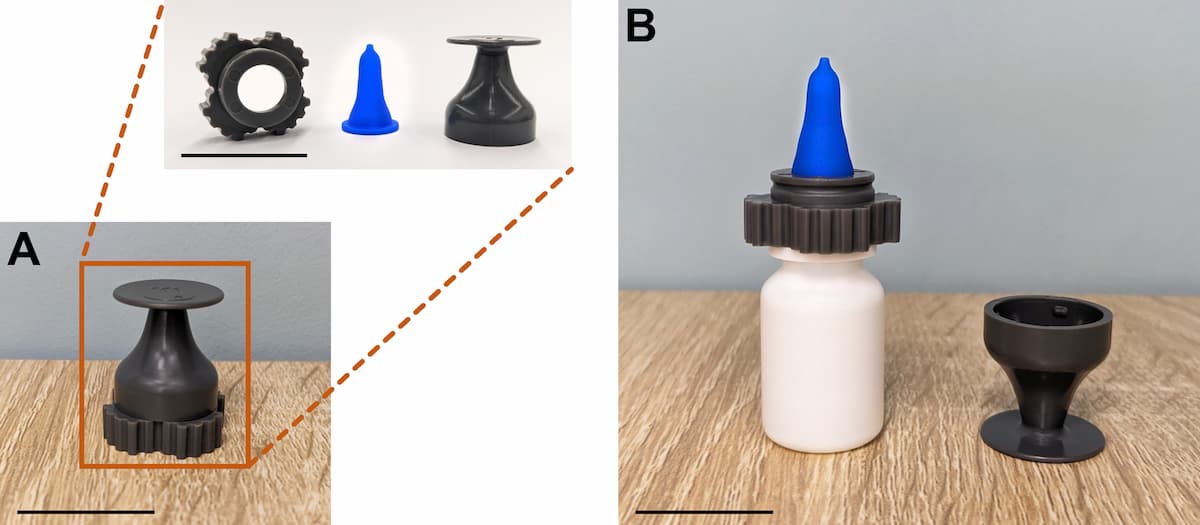- COVID-19
- Biosimilars
- Cataract Therapeutics
- DME
- Gene Therapy
- Workplace
- Ptosis
- Optic Relief
- Imaging
- Geographic Atrophy
- AMD
- Presbyopia
- Ocular Surface Disease
- Practice Management
- Pediatrics
- Surgery
- Therapeutics
- Optometry
- Retina
- Cataract
- Pharmacy
- IOL
- Dry Eye
- Understanding Antibiotic Resistance
- Refractive
- Cornea
- Glaucoma
- OCT
- Ocular Allergy
- Clinical Diagnosis
- Technology
Microdrops of timolol maleate 0.5% show no clinically significant difference in IOP compared to standard size drops
Results from the trial by Nannodropper show microdrops could reduce waste, cost, and side effects while being as effective as traditional size drops.
(Image Credit: AdobeStock/fotofabrika)

Nanodropper Inc has announced results from a clinical trial evaluating the Nanodropper® Adaptor have been published in the journal Ophthalmology and show there was no clinically significant difference in IOP with microdrops from the Nanodropper® Adaptor versus conventional eyedrops of the glaucoma treatment timolol maleate 0.5%.1
The Nanodropper is an adapter that attaches directly to eye drop bottles to reduce the size of drops that are administered into the eye. Drop size is reduced by over 60% and have been shown to reduce waste, cost and side effects.2 The trial evaluated 12.5 μL timolol maleate 0.5% microdrops compared to 28 μL drops in open-angle glaucoma (OAG) and ocular hypertension (OHT) patients.
"Eyedrop size has not seriously been commercially addressed in the past," said Alan L Robin, MD, corresponding author on the publication. "I believe microvolume delivery technologies may offer solutions in the form of less waste, increased patient savings, and hopefully better safety profiles for many topical ophthalmic medications. Nanodropper is the first commercially available potential solution to this long-standing problem."
The Nanodropper® Adaptor. (A) An assembled Nanodropper® Adaptor. Inset depicts the three components of the adaptor: the base, medical-grade silicone tip, and pop-off cap (from left to right). (B) A Nanodropper® Adaptor installed on an original equipment manufacturer bottle. The cap can be placed in an inverted position during use to minimize the risk of introducing contaminants when reattached to the base, during storage. The Nanodropper® Adaptor is a sterile medical device intended for single-bottle use. The black scale bar is equivalent to one inch. (Image Courtesy Ophthalmology)

The trial, a prospective, multicenter, randomized, parallel-group, single-masked, active-controlled, non-inferiority trial, evaluated 12.5 μL timolol maleate 0.5% microdrops compared to 28 μL drops in open-angle glaucoma (OAG) and ocular hypertension (OHT) patients. As well as showing no clinically significant difference between the drop sizes, subjects in the microdrops arm also experienced a significantly smaller decrease in heart rate compared to those that received conventional drops.1
Overall, 419 subjects were evaluated in the trial, with 207 in the conventional drops arm and 212 in the microdrops arm. Subjects were evaluated at 1, 2, and 8 hours after drop administration. According to the study, previous studies found that timolol 0.5% decreased IOP by 17-31% at hour 1,20-31% at hour 2, 28% at hour 5, and 35% at hour 8. In this study, timolol 0.5% decreased IOP by 20.22% (95% CI: 18.86 to 21.58%) at hour 1, 28.56% (95% CI: 27.20 to 29.92%) at hour 2, 29.43% (95% CI: 28.03 to 30.82%) at hour 5, and 28.43% (95% CI: 27.07 to 29.79%) at hour 8.3
References:
Landmark Non-inferiority Clinical Trial Demonstrates Nanodropper's Positive Impact on Glaucoma Treatment. Press release; March 21, 2024. Accessed March 22, 2024. https://www.prnewswire.com/news-releases/landmark-non-inferiority-clinical-trial-demonstrates-nanodroppers-positive-impact-on-glaucoma-treatment-302096181.html
About the Nanodropper. Accessed March 22, 2024. https://nanodropper.com/
Stegar J. PhD, Durai I. PhD, Odayappan, A. MD, et al. Published March 13, 2024 DOI:https://doi.org/10.1016/j.ophtha.2024.03.012
